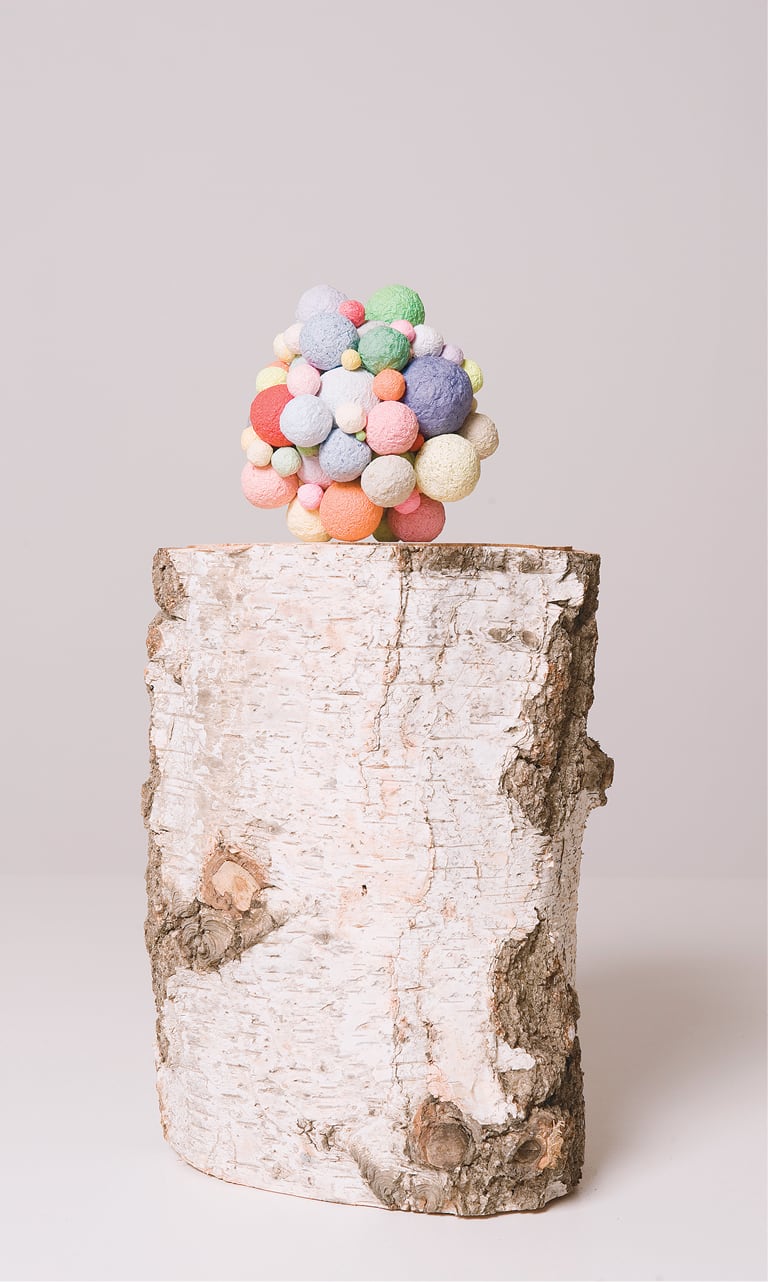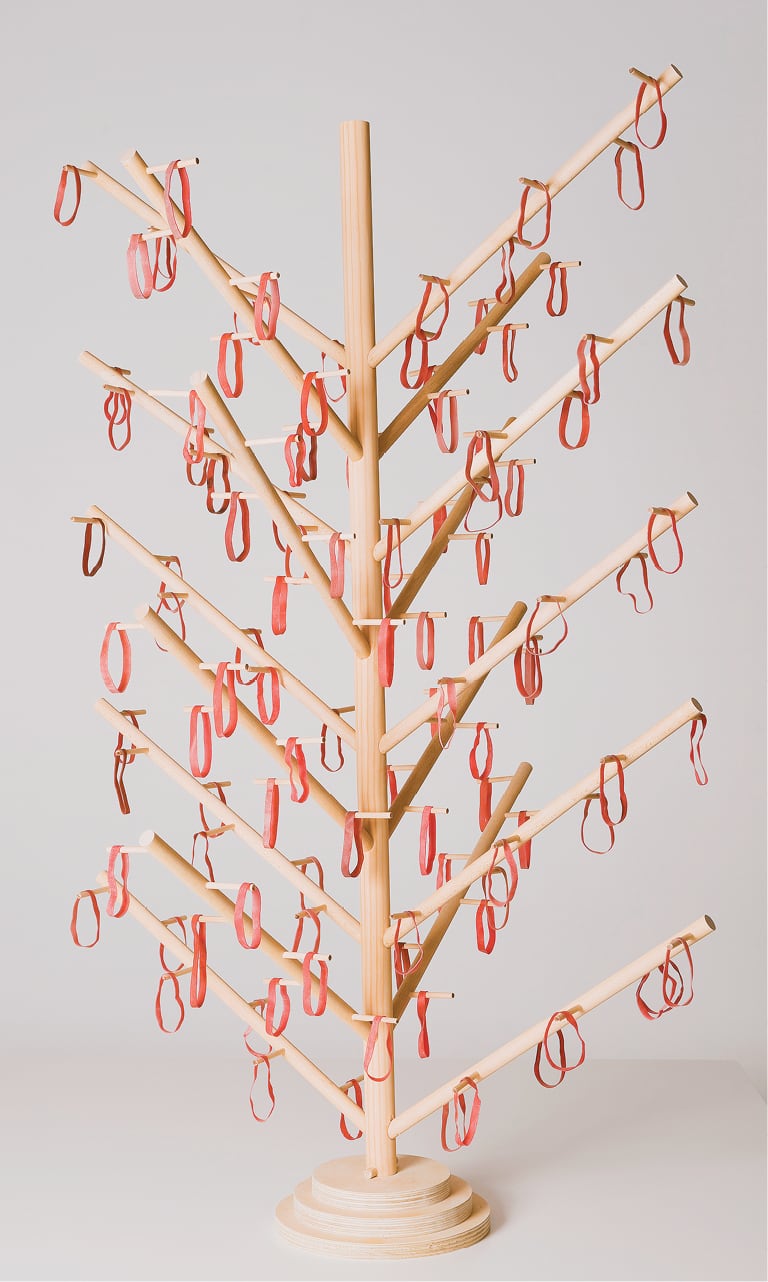
Facts Charlie Sofo Utopian Slumps, Melbourne 5–19 December 2009
Charlie Sofo is a collector. This was made patently clear in Facts, an exhibition in which Sofo carefully accumulated, categorised and displayed items and mementos that constitute the by-products of everyday urban life. From scraps of paper and discarded rubber bands to private phone numbers and flickering fluorescent lights, Sofo’s stockpiled ephemera provided a snapshot of the objects and events that infiltrate his daily existence. The exhibition presented a sprawling and idiosyncratic anthology, compiled through an obsessive artistic practice.
Sofo is not alone in this condition — the archival impulse is a prevalent one within contemporary art. Finding precedent in works as diverse as Andy Warhol’s Time Capsules — storage boxes brimming with a bewildering quantity of material that passed through Warhol’s hands — and the Bechers’ sedate, but formulaic photographs of industrial, post-war Germany, this trend is unified by a fascination with found materials, elevating the status of the personal archive to art object. Recent local exhibitions New World Records (Sutton Gallery, which Sofo also appeared in) and Lost & Found: An Archaeology of the Present (2008 TarraWarra Biennial), have surveyed this desire to record and map; a desire which provides a means to document — even historicise — the present.
When viewed in the context of a time characterised by rapid change, the popularity of the archive in contemporary art becomes understandable. As Charlotte Day, curator of Lost & Found, explains, ‘art can create a pause in the current of contemporary life, offering a shift of perspective that simulates a retrospective view on the present’.1 In this way, collecting becomes a coping mechanism against the exaggerated excesses of today; it is an act full of reflective possibilities.
Sofo’s collections are rich, evocative accumulations that speak of the artist’s life. For example, One Full Course of Antibiotics (2009) charts the mundane, methodical experience of taking prescribed medication. Residual packaging is shaped into miniscule foil orbs, representing each individual dose. These reanimated remains are balanced atop a handcrafted wooden structure, which is, in design, similar to an unfinished house frame, suggesting that the work is still in the process of completion. Sofo appears to be retroactively attempting to fix the pharmaceutical waste against a perishing time — capturing what he can of what is left behind. As immediate, intimate traces of Sofo’s life, One Full Course of Antibiotics not only evokes the still-life tradition, but also constructs an abstracted — yet enduring — self-portrait.
The interplay between individuals and objects is central to Facts. While the archive is often asserted as an objective index of the thing it represents, Sofo’s collections focus on the relationships they forge outside themselves. It is important that the materials have been found, and also where they’ve been found. In an act that recalls Michel de Certeau’s theory on spatial practices within the constructed order, Sofo seeks out signs of activity in public spaces — physical evidence of individuals activating and negotiating their urban environs.2 In the case of Bookmarks (2009) this search ends inside the pages of library books. Amassing forgotten makeshift bookmarks, Sofo draws out the interconnectedness between himself and the borrowers before him. That the bookmarks have been preserved beneath the surface of a chrome tabletop is similarly relevant since tables are sites where people come together and things are shared. Moreover, through this rescue, Sofo bypasses processes of consumption and exchange. He attains an almost direct interaction with previous owners and is able to create a sense of shared experience or collective spirit.

As the last exhibition to appear at Utopian Slumps before its departure from Collingwood, Facts acted as a fitting send-off for a space that placed emphasis on contemporary craft aesthetic. Sofo takes great care in the way he displays his found materials, handcrafting models to hold these collections. In Rubber Rack (2009) a collection of overstretched rubber bands found on footpaths are hung as decorations from a model tree. Such attention to presentation honors cast-aside materials, creating a space for them to be contemplated and revalued. Indeed, what is most enjoyable about Facts is the surprising — and beautiful — aesthetic reinventions Sofo bestows upon banal, discarded objects.
Sofo’s emphatic focus on items that now lack utility begs the question: Why should we be interested in such useless objects? But maybe it’s the very ubiquity of these inconsequential items that makes this presentation fascinating. As Trish Roan notes in the exhibition catalogue, ‘We exist amongst an abundance of objects that are so ubiquitous that they become almost invisible, so excessive that they’ve become meaningless, most of the time’.3 Sofo has spent a lot of time looking at things that could amount to nothing and collecting them into something. And this is crucial: without keeping or somehow recording material, we allow it to disintegrate and eventually disappear. Through his aesthetic re-inventions, Sofo manages to ‘give life’ to even the most underwhelming of objects. Ultimately one idea persists: no matter what the scale or alterations, archives are fundamental. Not necessarily for what they are, but for what they can tell us about ourselves and the world around us.
